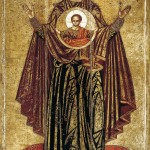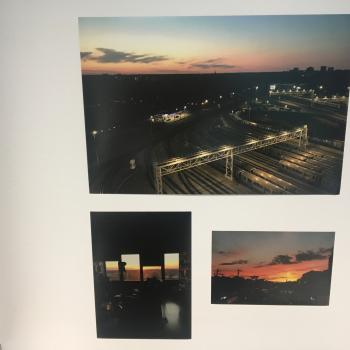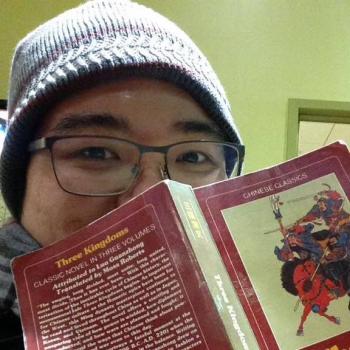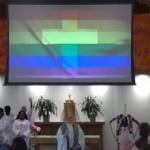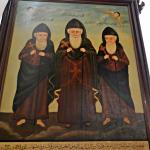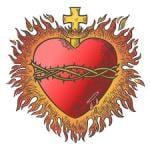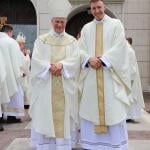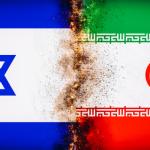![A VITA ICON OF ST. MARY OF EGYPT, RUSSIAN (MSTERA), LATE XIX CENTURY [PD-Art], via http://www.macdougallauction.com/detail.asp?id=13780](https://wp-media.patheos.com/blogs/sites/721/2016/08/Icon_of_Mary_of_Egypt_Mstera_19th_c.-857x1024.jpg)
For some odd reason, one of the most controversial posts on this blog has been the one on the Eastern Jesuit being ‘normal.’ For writing that post, I was called ignorant, latinizing, ‘inane’ (this one was by far my favourite), and all the other beautiful compliments that a new kid on the block on the Catholic blogosphere and Byzantine internet can hope to hear. There are many genuinely friendly people that I have also met, but the trolls are a special gift because the hidden consolations that they impart require me to exercise my faculties of discernment with much more precision.
Shortly after I wrote the post, the Eastern Jesuit in question messaged me. He said that on the surface, it could indeed be said (as one of my astute readers put it) that the Society of Jesus is indeed the full flower of the Latin Church and that perhaps it could be said that, by sheer numbers, the majority of Jesuits are pretty Latin. But to say that that empirical reality is normative would be to overlook St Ignatius of Loyola’s monastic dimensions.
At this point, he shared with me a piece by Fr Joseph Koczera SJ. Koczera writes very much as an Eastern Jesuit, hearing the call of St Ignatius of Loyola to go into the city as going into an urban desert, where – like the spiritual mothers and fathers of old, in the imitation of Jesus himself in the wilderness – a monastic is faced head-on with spirits that need to be discerned. Just as Derwas Chitty taught us that the desert was a city for the early Egyptian monastics, so for Koczera, the city is a desert.
The desert is not a barren wasteland. The quietness is loud, the solitude masking the pervasiveness of supernatural presences both benign and malevolent.
This desert is where I feel that these changes are bringing me – a new city where my sensibilities about race and capital will no doubt be completely confounded, a new eparchy mourning the repose of one bishop and waiting for the appointment of another, and even a new blog on an internet where one is forced to interact with spirits both good and bad. It is perhaps why I am calling out to the Lord to save me, to the Theotokos to spread her veil of protection over me, to St Nicholas to rescue me.
Maybe the difference between these stories and the desert is that the disciples, the city, and the drowning man call out to the Lord and his saints for salvation, and they are saved. The fortress is not breached, the ship does not sink, the man does not drown.
There is no such protection in the desert. Or is there?
As Abba Zosima wandered in the desert, he saw a strange figure in the wilderness. Chasing after it as it fled, he discovered it was a woman, her hair turned completely white. When he finally caught her, he discovered that St Mary of Egypt had been in the desert well for about forty-seven years. She spoke of herself as a sinner, but when it came to the discernment of spirits, she could even read what was in his heart. When he saw her pray, she saw that she had been lifted from the ground, hands outstretched. She told him the next year to bring her the Eucharist, and then she crossed the River Jordan and reposed.
But what St Mary said to Abba Zosima when he approached is perhaps the way to cap this contemplation. She asked him to throw his mantle over her to cover her: ‘Forgive me for God’s sake, but I cannot turn towards you and show you my face, Abba Zosima. For I am a woman and naked as you see with the uncovered shame of my body. But if you would like to fulfil one wish of a sinful woman, throw me your cloak so that I can cover my body and can turn to you and ask for your blessing.’
This is the attitude of the one who is in the desert. All of the descriptions of St Mary of Egypt’s spiritual mastery are Abba Zosima’s observations; what St Mary of Egypt keeps repeating to him is that she is a sinner – and not in the sense of her having spent her earlier life as what Khouria Frederica (Matthewes-Green) calls a ‘sexual athlete’ – but in the present tense, unworthy even of being in his presence, begging for his protecting mantle to cover her nakedness, asking for him to give her his blessing – and then later, Holy Communion.
There is no pride in being in the desert. There is only, as St John Cassian has it, the constant crying out – just like in our more contemporary usage of the Jesus Prayer – O God, make speed to save me; O Lord, make haste to help me (Conference X.10-11). The one who discerns the spirits is in constant need of protection.
So together with St Mary of Egypt, I call for protection in this desert. Throw your cloak over me, Abba Zosima, for I am a sinner. Father and Hierarch Nicholas, pray to God for us. Encompass us beneath the precious veil of your protection, Most Holy Theotokos. God, come to my assistance; Lord, make haste to help me.

